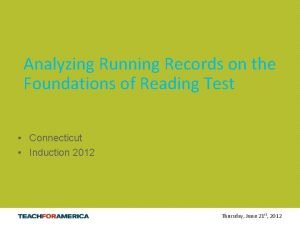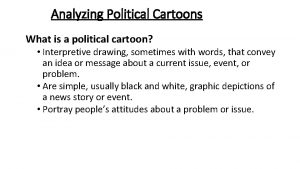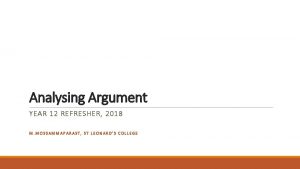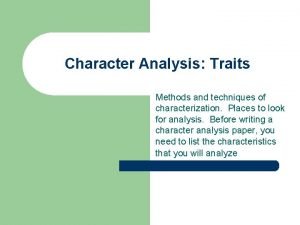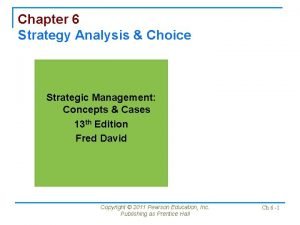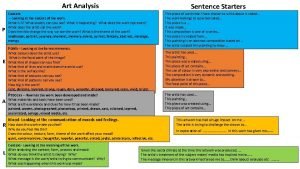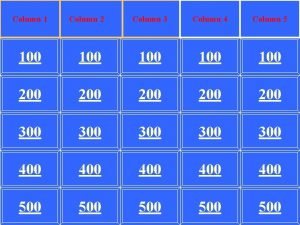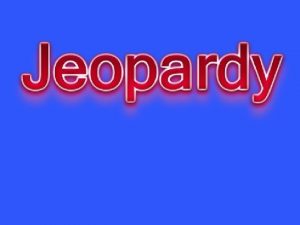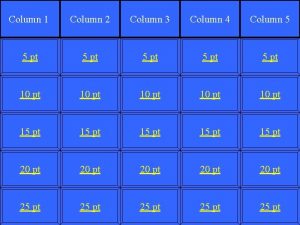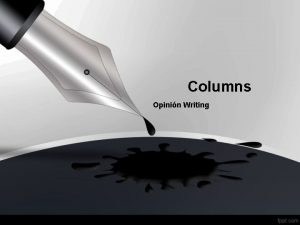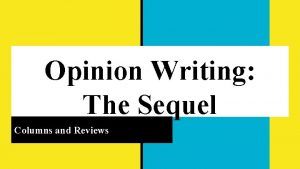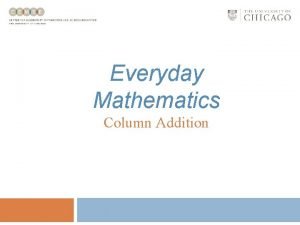Column Writing Analysing Columns Writing Your Own Column








- Slides: 8

Column Writing Analysing Columns Writing Your Own Column

Purpose and Audience u Columns have a clear purpose u Columns are aimed at a specific audience or element of society This can be determined by a number of things: u u – They will express a clear point of view; if not at the start, then by the end, the writer’s point of view should be clearly evident. – Ask yourself, why did the writer put pen to paper about this topic? – – subject matter language tone Allusions and references – – – teenagers property owners parents travellers music lovers etc Each of these things will mean something to one pr more sociatal groups, eg

Engaging the audience u Columns usually begin with a “hook” to engage the reader. It may be: –a –a u vivid description contentious statement personal anecdote shocking statistic Eg: “If you want a comment on masculinity in New Zealand, here it is. ” – The audience is addressed directly and a bold statement about what the article will deliver is presented.

From personal to universal Invariably, columns move from the personal, the detailed, the microcosm to the universal, the global, the macrocosm. u This can engage readers by relating to their own personal lives u – “Wednesday night is baked beans night at my house. Why? Not because of their high nutritional value (so often extolled by my boarding school mistresses), not because of their wonderful flavour…No, because Thursday is payday. ” u The article is about overspending and how people live beyond their means.

Structure u Columns have a recognisable structure: – introduction – body – conclusion u u u An argument or thesis is presented, developed and built upon, and summarised. The structure is often circular. If the column began with a personal anecdote, the ending may refer back to it. – “So Wednesday night will always be baked beans night. Thursday, on the other hand, well that’s another matter. ”

Researched and well informed The writer will have carefully researched his or her topic. u They will be able to substantiate points made with reliable evidence, suitable for the intended audience. u “The effects of mobile phone technology in New Zealand are widespread. It is estimated that 3. 4 million people – or 80% of the New Zealand population – have a mobile phone. ” u

Effective use of language 1 Common language techniques of columns to look out for are: u Varied sentence structure – complex, compound, simple, incomplete u Questioning u Conscious use of personal pronouns and direct address to reader u Vocabulary choice – colloquial, conversational, formal u Use of dialogue to illustrate ideas u Puns – a play of the multiple meanings in words (often in the title)

Effective use of language 2 Common language techniques of columns to look out for are: u Irony – a contrast between what is expected and what actually happens – eg u Allusion – reference to something outside the text that will be familiar to the reader – eg reference to a popular brand, TV programme, catch phrase. u Figurative language eg extended metaphor u Sound devices – onomatopoeia, alliteration, assonance, internal rhyme u Motif – a recurring image or idea that appears numerous times in the column – eg referring to relationships as a battlefield

